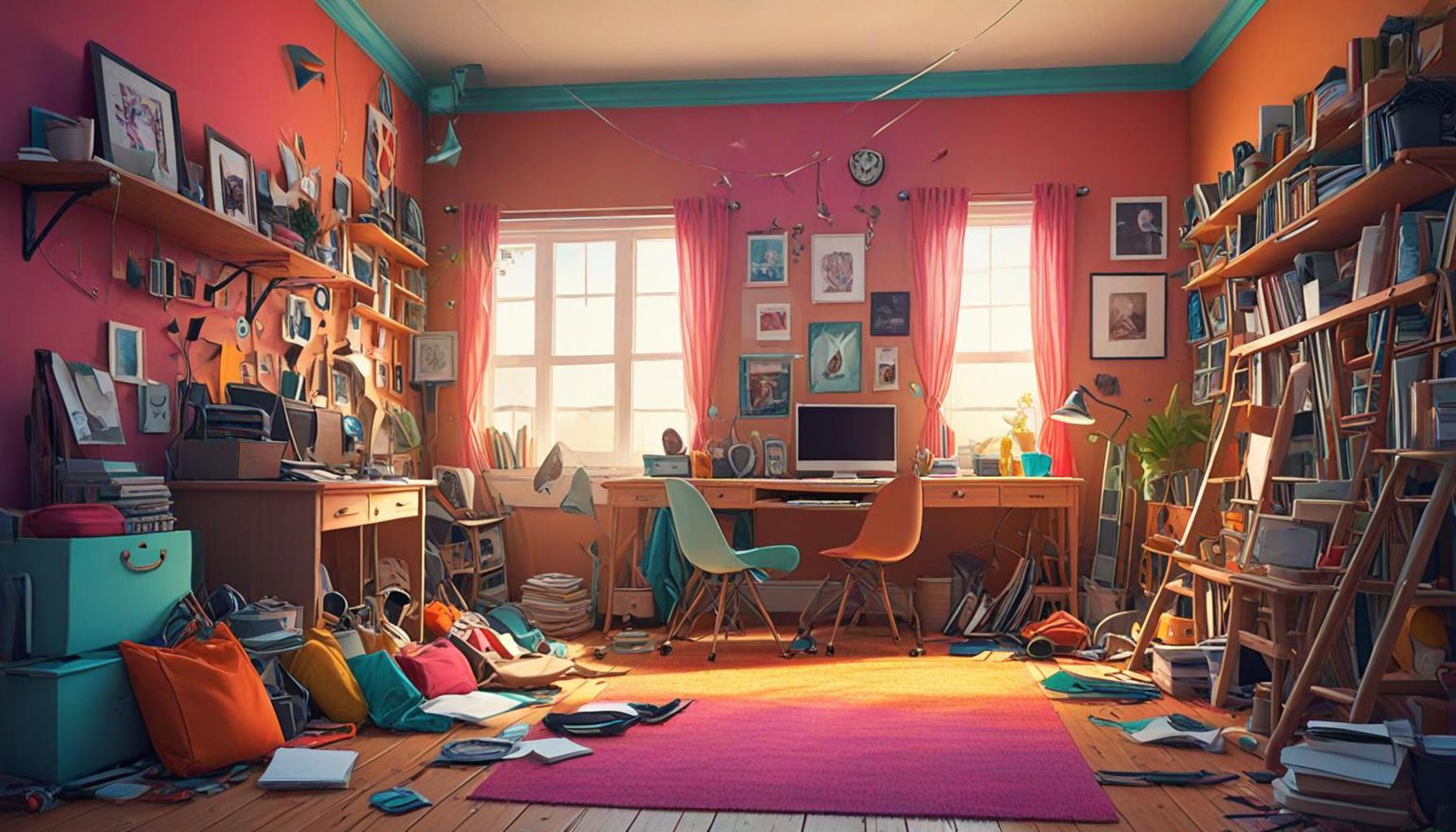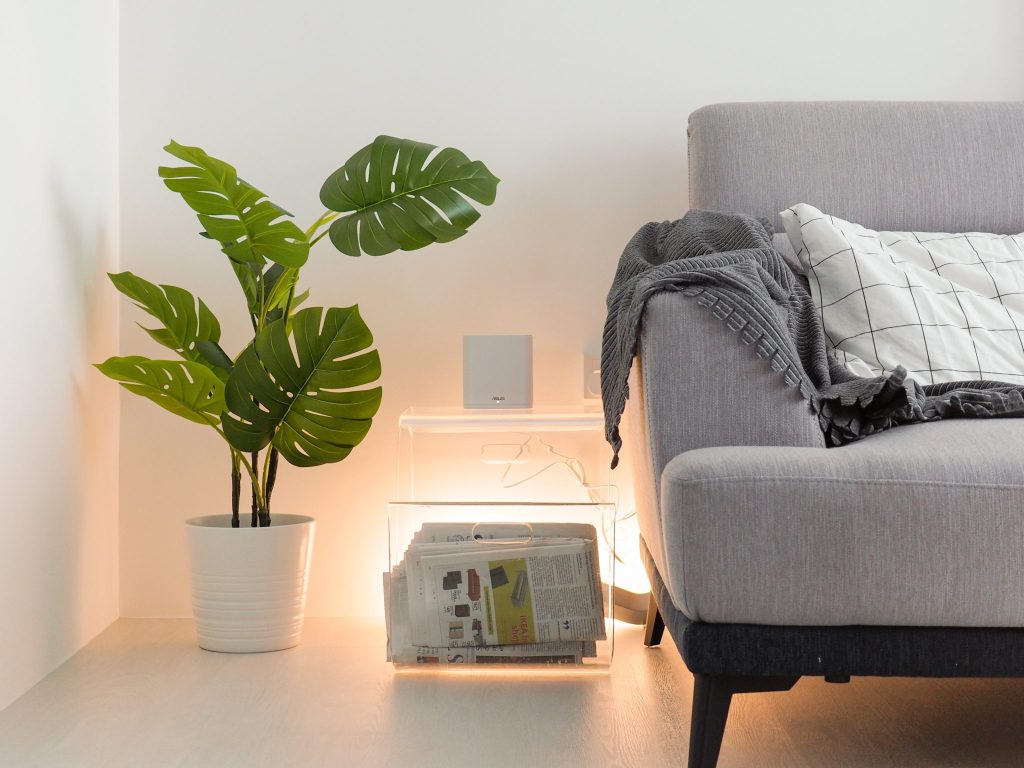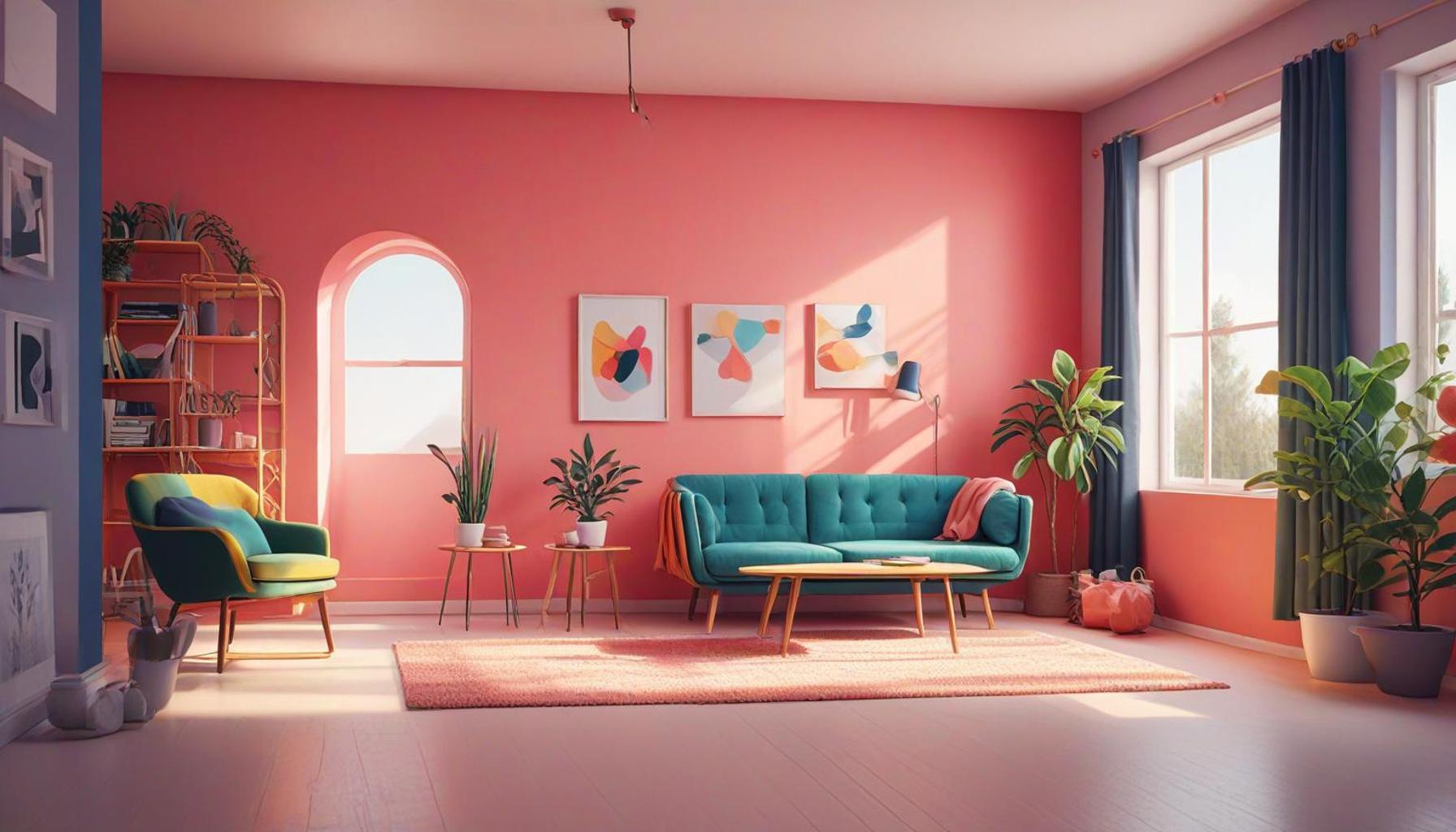The Relationship Between Intentional Design and Clutter Reduction: A Path to Personal Freedom

The Essence of Intentional Design
In our contemporary society, the practice of intentional design gains increasing importance as we navigate through rapidly changing environments, whether at work, home, or in communal spaces. The essence of this concept lies in the thoughtful arrangement of elements within any physical domain to enhance not only aesthetics but also functionality. The ultimate goal is to create environments that cater to our deeper needs for comfort, efficiency, and well-being. This design philosophy is not merely about decorating spaces with attractive decor; it wrestles with the complexities of how these spaces influence our emotions and behaviors.
The Impact of Clutter on Daily Life
One of the most profound implications of intentional design is its natural inclination towards clutter reduction. In an age where many people experience overwhelming amounts of information and material possessions, the art of decluttering becomes paramount for mental health. When our environments are cluttered, they can hinder our focus and lead to feelings of anxiety and stress. Studies show that physical clutter can significantly impact cognitive function, leading to decreased productivity. By adopting intentional design practices, we can actively reshape our surroundings into organized havens that boost our mental health.
Benefits of Clutter Reduction
Thoughtfully organized spaces can yield numerous benefits:
- Enhance productivity by minimizing distractions. A clean desk in a workspace, for instance, allows for better concentration during tasks, freeing cognitive resources for creativity and problem-solving.
- Foster mental clarity through simplified surroundings. A minimalist approach invites a sense of calm and reduces decision fatigue, allowing for clearer thinking and improved decision-making.
- Encourage creativity by providing an inviting atmosphere. Spaces designed with natural light, plants, and open layouts can ignite inspiration and spark innovation.
Imagine stepping into a room that is designed with intention—a living room free from excessive ornamentation, filled with functional furniture that promotes relaxation or stimulating conversation. This meticulous balance cultivates environments where one feels revitalized yet at ease. Such surroundings do not merely exist; they emanate a feeling of personal freedom and control.
A Journey Towards Transformation
As we explore the relationship between intentional design and clutter reduction, several methods emerge, such as the use of designated storage solutions, the implementation of multi-functional furniture, and the inclusion of calming color palettes. Understanding how to curate your space intentionally can lead to transformative changes, reshaping your daily experience and quality of life. By incorporating strategic design choices, one can personalize environments to reflect individual values and needs.

Join us on this enriching journey that delves into the core of intentional design, uncovering steps to not only declutter our physical spaces but also to foster a more profound sense of harmony and well-being in our lives. As we seek to create serene environments, we unlock pathways to enhanced productivity and a renewed sense of personal empowerment.
DIVE DEEPER: Click here for expert tips on maximizing efficiency
Understanding Intentional Design in Depth
To fully appreciate the relationship between intentional design and clutter reduction, we first need to delve deeper into the principles that underpin intentional design. This approach is not solely concerned with the outward appearance of a space but intricately investigates how the arrangement of each element within that space interacts with human behavior. Intentional design considers the psychological and emotional responses prompted by spatial configurations, colors, textures, and even lighting. By thoughtfully orchestrating these components, we can curate environments that elevate both functionality and comfort.
The Core Principles of Intentional Design
At its core, intentional design consists of several essential principles that guide the creation of organized, functional spaces conducive to personal freedom:
- Purpose: Designing with a clear purpose in mind helps determine what items are necessary and which contribute to clutter. A room designed for relaxation will differ significantly from a workspace or a play area.
- Functionality: Ensuring that every item serves a specific function prevents unnecessary accumulation. This approach encourages minimalism, a trend gaining traction across the United States as many individuals seek clarity amidst overwhelming choices.
- Aesthetic Harmony: Creating spaces that visually resonate with the inhabitants promotes emotional well-being. The cohesion of colors, materials, and furniture not only beautifies a space but elevates the mood and energy of the area.
- Flexibility: Incorporating adaptable elements—such as modular furniture—supports a dynamic lifestyle, allowing spontaneous changes that accommodate both needs and activities.
The intertwining of these principles invites us to recognize how intentional design is intrinsically linked to clutter reduction. When spaces are designed with purpose, clutter is not just minimized; it transforms into an outmoded concept. When individuals know what to keep and what to discard, the physical representation of their values is streamlined into their surroundings. It is this philosophy that aligns with the growing desire for personal freedom and authenticity in design choices.
Clutter as a Barrier
For many, clutter serves as a significant barrier to personal freedom and tranquility. In various studies, researchers have linked the prevalence of cluttered environments to psychological distress, reflecting the duality of disorganization: while it can provide a sense of comfort or familiarity, it often breeds chaos that stifles creativity and individuality. In fact, research from the University of California, Los Angeles (UCLA) discovered that individuals living in cluttered homes exhibited heightened levels of cortisol, a stress hormone, which may lead to a range of emotional and physical health issues. This illustrates how implementing intentional design can significantly impact our overall quality of life.
As we progress further into the discussion of intentional design’s role in reducing clutter, we will explore actionable strategies for creating spaces that promote wellness and productivity, paving the way to a more liberated existence. This journey of design transformation not only nurtures our immediate environments but also allows us to reclaim our time, energy, and ultimately our freedom, one thoughtful decision at a time.
| Advantage | Description |
|---|---|
| Enhanced Focus | Intentional design significantly reduces distractions, allowing for better concentration on tasks. |
| Improved Well-being | Clutter-free spaces are linked to lower stress levels, fostering a sense of peace and mental clarity. |
Understanding the relationship between intentional design and clutter reduction opens a pathway to experiencing personal freedom. With purposeful organization, individuals can craft environments that promote not only productivity but also emotional wellness. Intentional design prioritizes functionality and aesthetics, leading to spaces that effectively resonate with users’ needs. In focusing on specific areas to declutter and streamline, such as home offices or living spaces, intentional design allows individuals to curate their surroundings mindfully. This curation not only minimizes unnecessary items but also reinforces an intentional lifestyle, encouraging users to evaluate what truly matters in their personal and professional lives. Moreover, there is mounting evidence suggesting that our spaces impact our emotional states. By removing physical clutter, individuals often find that mental clutter dissipates as well. Empressive research indicates that achieving such an environment can lead to increased creativity and a greater ability to manage stress, allowing for enhanced clarity and decisiveness in daily decisions. Engaging with the principles of intentional design encourages deeper reflections on our choices, reinforcing the bond between our environments and our psychological state.
DISCOVER MORE: Click here to learn how intentional design can enhance your life
Transformative Strategies for Intentional Design
Recognizing the integral connection between intentional design and clutter reduction opens up a pathway to implementing transformative strategies that can reshape our surroundings and enhance our living experiences. These approaches inspire not just the aesthetic grandeur of our environments but also foster the liberation that comes from less clutter and enhanced clarity. Below are several strategies to implement intentional design in ways that promote both organization and personal freedom.
Incorporating the “One In, One Out” Rule
A powerful mantra in clutter management is the “one in, one out” rule. This simple guideline posits that for every new item brought into a space, an existing item should be removed. This practice compels individuals to be more discerning about their acquisitions and encourages a mindset that prioritizes functionality and purpose. According to National Association of Professional Organizers (NAPO), this technique can help significantly mitigate the habit of accumulating unnecessary belongings, which often leads to overwhelming clutter.
Utilizing Multi-functional Furniture
The concept of multi-functional furniture is an excellent representation of intentional design that serves the dual purpose of enhancing the utility of a space while minimizing clutter. For instance, a storage ottoman can serve as additional seating while offering hidden compartments for stowing away items. As reported by a survey from Houzz, an estimated 60% of homeowners express the desire for more storage solutions, making it clear that integrating such elements into our living spaces aligns with the growing need for effective clutter reduction strategies.
Creating Designated Zones
Another key strategy is establishing designated zones for different activities within a given area. The layout of a room should reflect its intended use, segregating spaces dedicated to work, relaxation, or socializing, which helps streamline that environment’s functionality. For instance, a home office may be designed for maximum productivity with specific areas for objects like books, electronics, and important documents, while ensuring those items stay contained within that zone. Research shows that clearly defined zones not only foster organization but also contribute positively to mental clarity, making the environment more conducive to personal freedom.
Mindfully Selecting Decor
The process of mindfully selecting decor is another essential consideration in intentional design. Each decorative element should serve a purpose or evoke a desired emotion. Whether it’s adding a peace-imbued plant or selecting artwork that resonates personally, intentional choices promote a sense of belonging and comfort. In addition, decorative items should be limited to those that inspire joy or provoke meaning, significantly reducing visual clutter and facilitating emotional connection. Marie Kondo’s decluttering approach has gained widespread popularity as it highlights the importance of surrounding ourselves with items that spark joy—an idea that aligns seamlessly with intentional design.
In a world increasingly defined by consumerism, implementing intentional design strategies serves as a reminder that transforming our spaces into havens of organization is not merely an aesthetic endeavor, but a pivotal step towards reclaiming personal freedom. By embracing careful selection and purposeful arrangement, individuals can cultivate environments that reflect their true identities and liberate them from the burdens of excessive clutter.
DISCOVER MORE: Click here to uncover effective decluttering strategies
Embracing Intentional Design for Lasting Change
In conclusion, the relationship between intentional design and clutter reduction unveils a transformative journey toward personal freedom and empowered living. By embracing deliberate choices regarding our environments, we unlock the potential to create spaces that serve not only our needs but also our values. Each strategy discussed—from the “one in, one out” rule to mindful decor selection—offers practical methods to reshape our surroundings while championing efficiency and tranquility.
The continuous practice of organization allows for a profound shift in how we perceive our personal spaces. Living in a clutter-free environment enhances not only physical comfort but also mental clarity, leading to improved emotional well-being. It empowers individuals to break free from the limitations imposed by material accumulation and fosters a lifestyle defined by purpose and intention. Furthermore, as awareness grows around the impact of intentional design, more people are compelled to investigate and embrace minimalism as a principle rather than a fleeting trend.
Ultimately, the synergy between intentional design and clutter reduction emphasizes a crucial insight: by thoughtfully curating our environments, we build a foundation for a life rich in clarity and freedom. As we cultivate these practices, we find ourselves not only reclaiming our physical spaces but also positioning ourselves on a path toward greater life satisfaction. So, consider how your space can reflect your essence, and embark on this liberating journey today.


